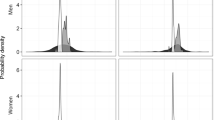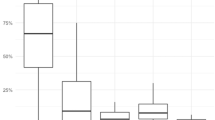Abstract
Estimating personal exposures to air pollution is a crucial component in identifying high-risk populations and determining efficient control strategies. Because of the difficulty of comprehensively measuring personal exposure, data on air pollution patterns in homogenous microenvironments linked with activity data are often used as surrogates. In this study, we focus on strengthening the available information about nonresidential microenvironmental exposures to particulate matter and other combustion pollutants. During the summer of 2000, we measured ultrafine particles, fine particulate matter (PM2.5), and particle-bound polycyclic aromatic hydrocarbons (PAHs) outdoors and in indoor microenvironments in Boston, Massachusetts. In indoor microenvironments averaged across sample days, mean ultrafine particle concentrations ranged from 3800 to 140,000 particles/cm3, with 7–200 μg/m3 of PM2.5 and 5–12 ng/m3 of particle-bound PAH. PM2.5 indoor–outdoor ratios generally exceeded 1 in settings with high levels of human activity, with lower ratios for ultrafine particles. Cooking activities contributed significantly to elevated levels of all three pollutants. Using Linear Mixed Effects models with AR-1 autoregressive correlation structures, 10-min average outdoor concentrations were generally weak predictors of indoor levels, with stronger relationships in an apartment without mechanical ventilation than in air-conditioned nonresidential settings. Although further study would be needed to determine whether these patterns could be generalized beyond the monitored sites, these data support previous findings and enhance our knowledge about nonresidential exposure patterns.
This is a preview of subscription content, access via your institution
Access options
Subscribe to this journal
Receive 6 print issues and online access
$259.00 per year
only $43.17 per issue
Buy this article
- Purchase on Springer Link
- Instant access to full article PDF
Prices may be subject to local taxes which are calculated during checkout



Similar content being viewed by others
References
Abt E Suh HH Allen G Koutrakis P Characterization of indoor particle sources: a study conducted in the metropolitan Boston area, Environ Health Perspect (2000a) 108: 35–44
Abt E Suh HH Catalano P Koutrakis P Relative contribution of outdoor and indoor particle sources to indoor concentrations, Environ Sci Technol (2000b) 34: 3579–3587
Allen G Sioutas C Koutrakis P Reiss R Lurmann FW Roberts PT Evaluation of the TEOM method for measurement of ambient particulate mass in urban areas, J Air Waste Manage Assoc (1997) 47: 682–689
Brauer M Hirtle RD Hall AC Yip TR Monitoring personal fine particle exposure with a particle counter, J Expos Anal Environ Epidemiol (1999) 9: 228–236
Chang LT Koutrakis P Catalano PJ Suh HH Hourly personal exposures to fine particles and gaseous pollutants—results from Baltimore, Maryland, J Air Waste Manage Assoc (2000) 50: 1223–1235
Chang LT Suh HH Wolfson JM Misra K Allen GA Catalano PJ Koutrakis P Laboratory and field evaluation of measurement methods for hourly exposures to O3, CO, and PM2.5, J Air Waste Manage Assoc (2001) 51: 1414–1422
Chow JC Watson JG Houck JE Pritchett LC Rogers CF Frazier CA Egami RT Ball BM A laboratory resuspension chamber to measure fugitive dust size distributions and chemical compositions, Atmos Environ (1994) 28: 3463–3481
Chuang JC Callahan PJ Lyu CW Wilson NK Polycyclic aromatic hydrocarbon exposures of children in low-income families, J Expos Anal Environ Epidemiol (1999) 2: 85–98
Davidian M Giltinan DM Nonlinear Mixed Effects Models for Repeated Measurement Data. Chapman and Hall, London 1995
Dejmek J Solansky I Benes I Lenicek J Sram RJ The impact of polycyclic aromatic hydrocarbons and fine particles on pregnancy outcome, Environ Health Perspect (2000) 108: 1159–1164
Dockery DW Pope CA III . Acute respiratory effects of particulate air pollution, Annu Rev Public Health (1994) 15: 107–132
Dubowsky SD Wallace LA Buckley TJ The contribution of traffic to indoor concentrations of polycyclic aromatic hydrocarbons, J Expos Anal Environ Epidemiol (1999) 9: 312–321
Houseman EA Ryan L Levy JI Spengler JD Autocorrelation in real-time continuous monitoring of microenvironments, J Appl Stat in press
Janssen NAH De Hartog JJ Hoek G Brunekreef B Lanki T Timonen KL Pekkanen J Personal exposure to fine particulate matter in elderly subjects: relation between personal, indoor, and outdoor concentrations, J Air Waste Manage Assoc (2000) 50: 1133–1143
Levy JI Houseman EA Ryan L Richardson D. Students from the 1998 Summer Program in Biostatistics, and Spengler J.D. Particle concentrations in urban microenvironments, Environ Health Perspect (2000) 108: 1051–1057
Long CM Suh HH Koutrakis P Using time- and size-resolved particulate data to quantify infiltration and deposition behavior, Environ Sci Technol (2001) 35: 2089–2099
Mosley RB Greenwell DJ Sparks LE Guo Z Tucker WG Fortmann R Whitfield C Penetration of ambient fine particles into the indoor environment, Aerosol Sci Technol (2001) 34: 127–136
Nel AE Diaz-Sanchez D Ng D Hiura T Saxon A Enhancement of allergic inflammation by the interaction between diesel exhaust particles and the immune system, J Allergy Clin Immunol (1998) 102: 539–554
Ott WR Mage DT Thomas J Comparison of microenvironmental CO concentrations in two cities for human exposure modeling, J Expos Anal Environ Epidemiol (1992) 2: 249–267
Pellizzari ED Clayton CA Rodes CE Mason RE Piper LL Fort B Pfeifer G Lynam D Particulate matter and manganese exposures in Toronto, Canada, Atmos Environ (1999) 33: 721–734
Pope CA III . Epidemiology of fine particulate air pollution and human health: biologic mechanisms and who's at risk?, Environ Health Perspect (2000) 108(suppl 4): 713–723
Pope CA III Thun MJ Namboodiri MM Dockery DW Evans JS Speizer FE Heath CW Jr Particulate air pollution as a predictor of mortality in a prospective study of US adults, Am J Respir Crit Care Med (1995) 151: 669–674
Robinson JP Thomas J Time Spent in Activities, Locations, and Microenvironments: A California–National Comparison Project Report. U.S. Environmental Protection Agency, Environmental Monitoring Systems Laboratory, Las Vegas, NV 1991
Rojas-Bracho L Suh HH Koutrakis P Relationship among personal, indoor, and outdoor fine and coarse particle concentrations for individuals with COPD, J Expos Anal Environ Epidemiol (2000) 10: 294–306
Samet JM Dominici F Curriero FC Coursac I Zeger SL Fine particulate air pollution and mortality in 20 U.S. cities, 1987–1994, N Engl J Med (2000) 343: 1742–1749
U.S. DHHS Toxicological Profile for Polycyclic Aromatic Hydrocarbons. Agency for Toxic Substances and Disease Registry, Atlanta, GA 1995
Vette AF Rea AW Lawless PA Rodes CE Evans G Highsmith VR Sheldon L Characterization of indoor–outdoor aerosol concentration relationships during the Fresno PM exposure studies, Aerosol Sci Technol (2001) 34: 118–126
Wakefield J Human exposure: the key to better risk assessment, Environ Health Perspect (2000) 108: A559–A565
Wallace L Indoor particles: a review, J Air Waste Manage Assoc (1996) 46: 98–126
Wallace L Real-time monitoring of particles, PAH, and CO in an occupied townhouse, Appl Occup Environ Hyg (2000) 15: 39–47
Wichmann H Spix C Tuch T Wolke G Peters A Heinrich J Kreyling WG Heyder J Daily mortality and fine and ultrafine particles in Erfurt, Germany, Health Effects Institute, Research Report 98 (November 2000)
Wilson NK Barbour RK Chuang J Mukund R Evaluation of a real-time monitor for fine particle-bound PAH in air, Polycyclic Aromat Compd (1994) 5: 167–174
Acknowledgements
We thank Kevin Banahan, Nicholas Lange, and Daniel Seifert for their assistance in collecting field measurements, and Haluk Ozkaynak for providing useful feedback. Funding for this research was provided by the US EPA under Task Order no. 0011 of contract 68-D-99-011 to Battelle.
Author information
Authors and Affiliations
Corresponding author
Rights and permissions
About this article
Cite this article
LEVY, J., DUMYAHN, T. & SPENGLER, J. Particulate matter and polycyclic aromatic hydrocarbon concentrations in indoor and outdoor microenvironments in Boston, Massachusetts. J Expo Sci Environ Epidemiol 12, 104–114 (2002). https://doi.org/10.1038/sj.jea.7500203
Received:
Published:
Issue Date:
DOI: https://doi.org/10.1038/sj.jea.7500203
Keywords
This article is cited by
-
Ranking the environmental factors of indoor air quality of metropolitan independent coffee shops by Random Forests model
Scientific Reports (2022)
-
Risk assessment of particulate matter by considering time-activity-pattern and major microenvironments for preschool children living in Seoul, South Korea
Environmental Science and Pollution Research (2021)
-
Assessment of exposure effects of indoor particles in different microenvironments
Air Quality, Atmosphere & Health (2021)
-
The role of particle resuspension within PM concentrations in underground subway systems
International Journal of Environmental Science and Technology (2020)



